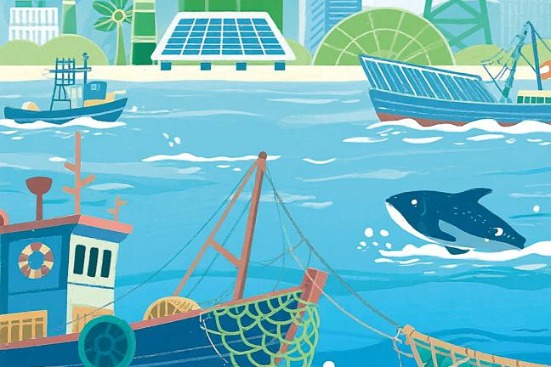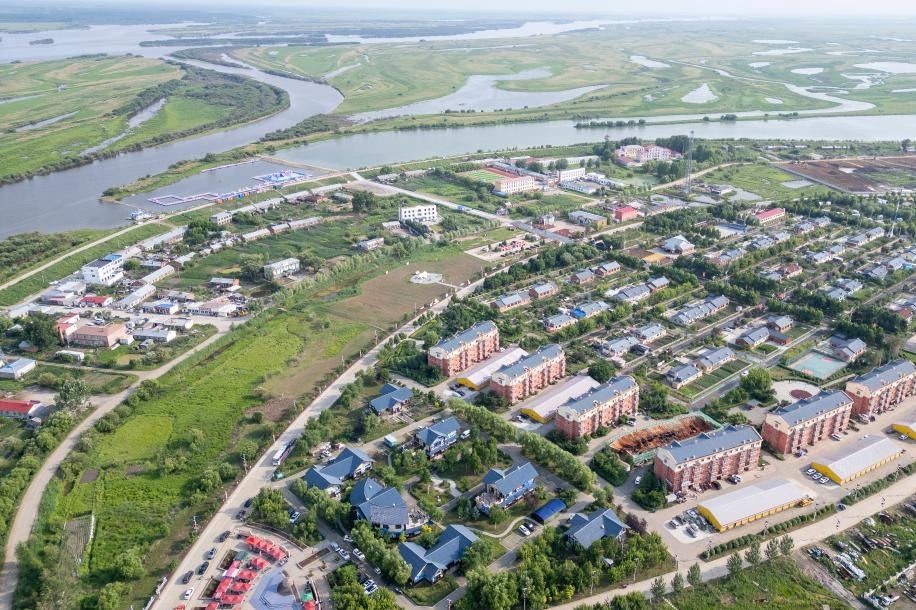Kunming to Glasgow, building a carbon-neutral world


According to the World Meteorological Organization and the UN Office for Disaster Risk Reduction, climate change and increasingly extreme weather events have caused a surge in natural disasters over the past 50 years, disproportionately impacting poorer countries.
However, nature could help us to address these problems in some way.
The World Wide Fund for Nature started supporting the Chinese government to develop river lake connectivity plans to manage floods through economically viable, nature-based solutions from 2002. By 2010, there were more than 30 lakes in the Yangtze River basin, about 2,000 square kilometers of which have been connected seasonally.
In addition, Poyang Lake and Dongting Lake, two natural lakes, have been connected to the Yangtze River, along with another nearly 6,000 sq km land area with an additional flood control capacity of 1.5 billion cubic meters. It has also increased the number of threatened species to 39 and brought cleaner water to 30 million people.
Climate change and the loss of biodiversity reinforce each other, and neither issue will be successfully resolved unless both are tackled together. In the past, policies have largely treated climate change and biodiversity in silos. The joint report of the Intergovernmental Panel on Climate Change and the Intergovernmental Science-Policy Platform on Biodiversity and Ecosystem Services shows the benefits of synergizing biodiversity and climate in policymaking.
It is abundantly clear that nature-based-solutions, a sustainable way of using nature for tackling socio-environmental challenges, will be instrumental in achieving a "carbon-neutral, nature-positive, and equitable world for all".
Nature-based-solutions can also help in better connecting the ongoing UN Biodiversity Conference in Kunming, Yunnan province, and the UN Climate Change Conference to be held in two weeks' time in Glasgow, Scotland.
First, the two UN conferences together could help build momentum across the UN process to help countries adopt an integrated and ambitious approach to fight climate change and conserve biodiversity.
Second, the parties to UN Framework Convention on Climate Change and the UN Convention on Biological Diversity should work at national levels to better align Nationally Determined Contributions and National Biodiversity Strategies and Action Plans, according to the Paris Agreement.
Wider-level dialogues and collaborations among government agencies, academia, financial institutions, businesses and civil society organizations are necessary to make more clear and define nature-based solutions, and increase public and private funding for it.
After President Xi Jinping announced in September 2020 that China will peak its carbon emissions before 2030 and realize carbon neutrality before 2060, the country exhibited its unswerving support to the Paris Agreement and its emerging leadership on climate change. In the 14th Five-Year Plan (2021-25), six out of eight mandatory indicators are directly or indirectly related to the health of nature. The Five-Year Plan says that by 2025, energy consumption per unit of GDP will be reduced by 13.5 percent and carbon dioxide emissions per unit of GDP by 18 percent.
With mandatory indicators being "must-achieve" tasks for officials at all levels, the plan shows that China has resolved to fulfill its Nationally Determined Contribution commitments and realize the green transition. The country has also taken several innovative and effective practices for conservation, such as the ecological red-line initiative aimed at protecting more than 25 percent of land, and natural asset auditing to improve accountability of local officials.
We have good reason to believe that China will play an increasingly important role at the UN Biodiversity Conference and beyond in better protecting the environment and preserving biodiversity, and in helping build a community with a shared future for mankind.
We need to set a "nature positive" global goal for 2030, measurable like the one China has for peaking emissions before 2030. A global goal for better protecting nature can unite around the joint efforts of governments, businesses, investors and consumers across the world, which would allow us to make the needed transformative changes, not only prioritizing the protection and restoration of ecosystems that are both biodiversity-rich and large sinks of carbon and other greenhouse gases, but also addressing the unsustainable production and consumption problems, which drives both climate change and biodiversity loss.
Natural capital should be valued as much as financial and human capital. Since mangroves, our natural coast guards, prevent billions of dollars in losses caused by coastal flooding globally every year, protecting and restoring mangroves can, to a certain extent, reduce the investment and the maintenance cost of breakwater.
Also, a life-cycle cost-efficiency analysis and accounting for nature-based solutions are necessary.
More than 75 percent of China's population will be living in cities by 2035. And, contrary to popular thought, urban areas are also home to a myriad of ecosystems and local species.
Regulations and actions such as effectively addressing biodiversity loss and climate change through better spatial planning, restoring urban parks and green areas, enabling nature-friendly investment, building ecological corridors for species and encouraging citizens to take action to better protect and conserve nature will also help better protect the environment and conserve biodiversity.
The author is the coordinator for the Priority Project on the Convention on Biological Diversity, WWF China.
The views don't necessarily reflect those of China Daily.
If you have a specific expertise, or would like to share your thought about our stories, then send us your writings at opinion@chinadaily.com.cn, and comment@chinadaily.com.cn.


































